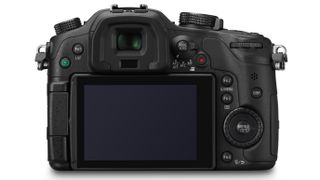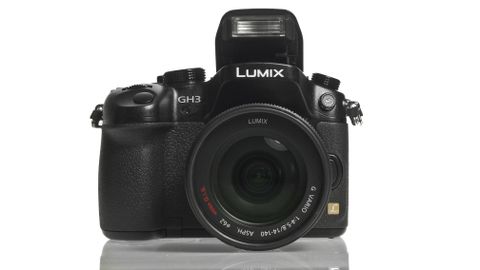TechRadar Verdict
Pros
- +
Responsive touchscreen
- +
Quick and easy controls
- +
Wi-Fi system
- +
Remote control
Cons
- -
Social integration isn't great
- -
No focus peaking
- -
No image rating button
Why you can trust TechRadar
Panasonic's Michiharu Uematsu tells us that the company consulted around 100 Panasonic GH2 users, including professional filmmakers, post-production workers and broadcasters, to hear what they would like to see in its replacement - the Panasonic GH3.
Between them they managed to produce a fairly long list, and while Uematsu says the company hasn't been able to give them everything they asked for, he says that they will find 75-80% of their requirements have been met by the new compact system camera (CSC).
Panasonic's main aim for the GH3 was to give it greater appeal to serious photographers and videographers. It has attempted to do this with improved handling, better build quality, more direct controls, an upgraded touchscreen, bolstered video recording technology and Wi-Fi connectivity.

Let's take a closer look.
Inside the Panasonic GH3 is a 16.05MP Micro Four Thirds sensor, which at 17.3 x 13mm is a little smaller than an APS-C format device.
This is coupled with a new Venus Engine FHD processor that enables better noise performance at high sensitivity values, especially in the shadows, thanks to its multi-stage noise reduction system.
Being a Micro Four Thirds (MFT) camera means that the Panasonic GH3 is compatible with a wide range of optics from the two main players in the MFT market, Panasonic and Olympus, as well as a handful from Sigma, Tokina and Voigtlander.

Because the sensor is smaller than full-frame, the lenses are subject to a 2x focal length multiplication factor. This means that the Panasonic Lumix G X Vario 12-35mm f/2.8 Asph lens, which is available with the Panasonic GH3, gives a focal length range equivalent to a 24-70mm optic on a 35mm camera with a fixed maximum aperture of f/2.8.
Although it is aimed at experienced photographers and has the expected program, aperture priority, shutter priority and manual exposure modes, the Panasonic GH3 also has a collection of automatic scene modes as well as Panasonic's Intelligent Auto (iA) mode that does most of the thinking for you.
So it can be used by less experienced photographers who want plenty of head-room.

Panasonic has extended the GH3's video capability in comparison with the Panasonic GH2, so Full HD footage can be recorded in AVCHD, MP4 or MOV formats, at a range of frame rates including 50p, 50i, 25p and 24p. In addition, MOV and VCHD movies can be recorded with timecode to help with locating scenes or frames and synchronising with other devices.
Movies can be recorded in any of the available exposure modes, and a still image can be captured simultaneously, if required. Full exposure control is also available during recording when shooting movies in Creative Video mode. Slow and fast motion recording is also possible.
In response to feedback, Panasonic has also changed the microphone input port on the GH3 to the popular 3.5mm socket. A headphone port is provided to help with audio monitoring.
The Panasonic GH3 is currently priced at £1549/US$1298 (around AU$1230) online, for the body only.

Your Sky TV just got 10 times better with a load of useful free updates

Researchers have used lasers on a material used in nuclear fuel to create a quasi-eternal data storage media — super-hard silicon carbide DVD-like discs could have a capacity of 677GB

Billions of Discord chats have been harvested, set to be sold online
